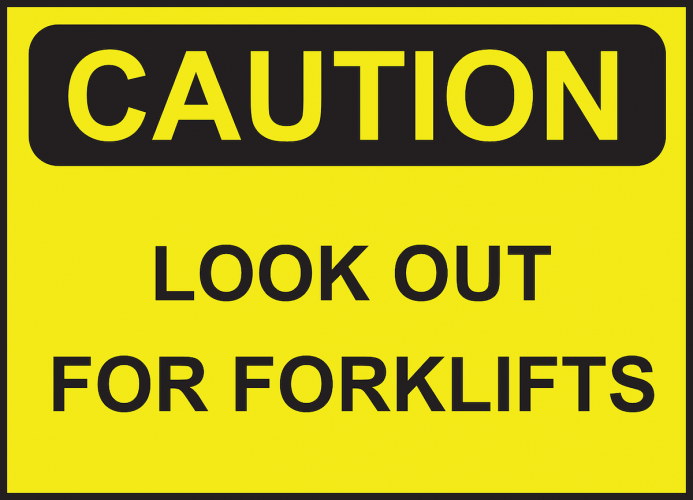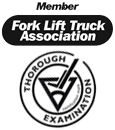The short answer is yes. But, any dangers associated with forklifts and forklift operation can be drastically reduced as long as strict safety measures are in place designed to protect anyone operating or working around forklifts.
In this short article, we look into the main dangers posed by forklifts, how accidents happen, and the ways your business can help reduce injuries to forklift operators and pedestrians, as well as prevent damage to items being lifted.
Like any motorised vehicle, forklifts can be extremely dangerous, but unlike other vehicles, such as cars, forklifts have other unique dangers associated, which include:
The average forklift weighs about 9000lbs (4082.3kg), whereas the average car weighs around 3000lbs (1360.7kg). This extra weight means that when a person is struck by a moving forklift, the risk of injury/fatality increases.
Although modern forklifts are designed to be extremely stable, if incorrectly loaded or driven recklessly, the danger of tipping, falling or rolling over causing serious injuries or fatalities increases substantially.
Due to how forklifts carry loads, there’s always a risk of the load falling, especially during the lifting or setting down process, and particularly if the forklift operator is inexperienced or not taking the right precautions.
If carrying a large load, physics dictates that the stopping distance of a forklift will need to be increased to help prevent the load from toppling, a factor that could increase crash risk, or endanger pedestrians in the immediate area.
Due to the design of a forklift, visibility for the operator can be seriously diminished, especially whilst carrying a large load. This fact means those working around the forklift are in increased danger of injuries and/or fatalities.
There are various reasons forklift accidents happen, but thankfully, most of these accidents can be avoided, if the right safety measures are put in place. Below we’ve listed some of the main causes of forklift accidents.
Despite Regulation 9 of the Provision and Use of Work Equipment Regulations 1998 stating that forklift operators must be certified and have a Basic Training Certificate, many accidents happen due to poor training, or a lack of training.
Although it’s highly recommended that loads should be carried as low to the ground as possible, many forklift accidents still happen as a result of poor visibility or overall instability, due to loads being moved whilst elevated.
Driving a heavily loaded forklift too fast not only creates a danger to pedestrians but also greatly increases the risk of tipping or rolling, especially when navigating tight corners, a manoeuvre that must be done gradually.
Wherever a forklift is being operated, workers and visitors to the area must know where it's safe to walk, where the forklift operates, and when forklift operation is taking place, so they can remain at a safe distance.
The correct signage is also essential to help guide the forklift operator by showing them where they’re allowed to operate, when they can operate, and the specific speed limits in the different areas of the warehouse or similar space.
It really shouldn’t happen, but some forklift accidents, including fatalities, happen because workers are sitting on top of loads, or on another part of the forklift not meant for sitting or standing on.
To ensure safe forklift operation and to reduce the risk of accidents, it’s vital that:
This means each forklift operator acquires a Basic Training Certificate, to gain a good understanding of the:
This includes daily maintenance checks carried out by forklift operators, as well as regular professional servicing and/or repairs carried out by a forklift specialist.
Forklift signage, including line markings and eye-level signage, must include speed limit signs, restricted access signs, directional signs, and signs to warn pedestrians.
If you’re looking to buy new forklifts or used forklifts, or for a forklift service, refurbishing or forklift repairs, contact Beds & Bucks Forktrucks, one of the UK's leading forklift specialists.


